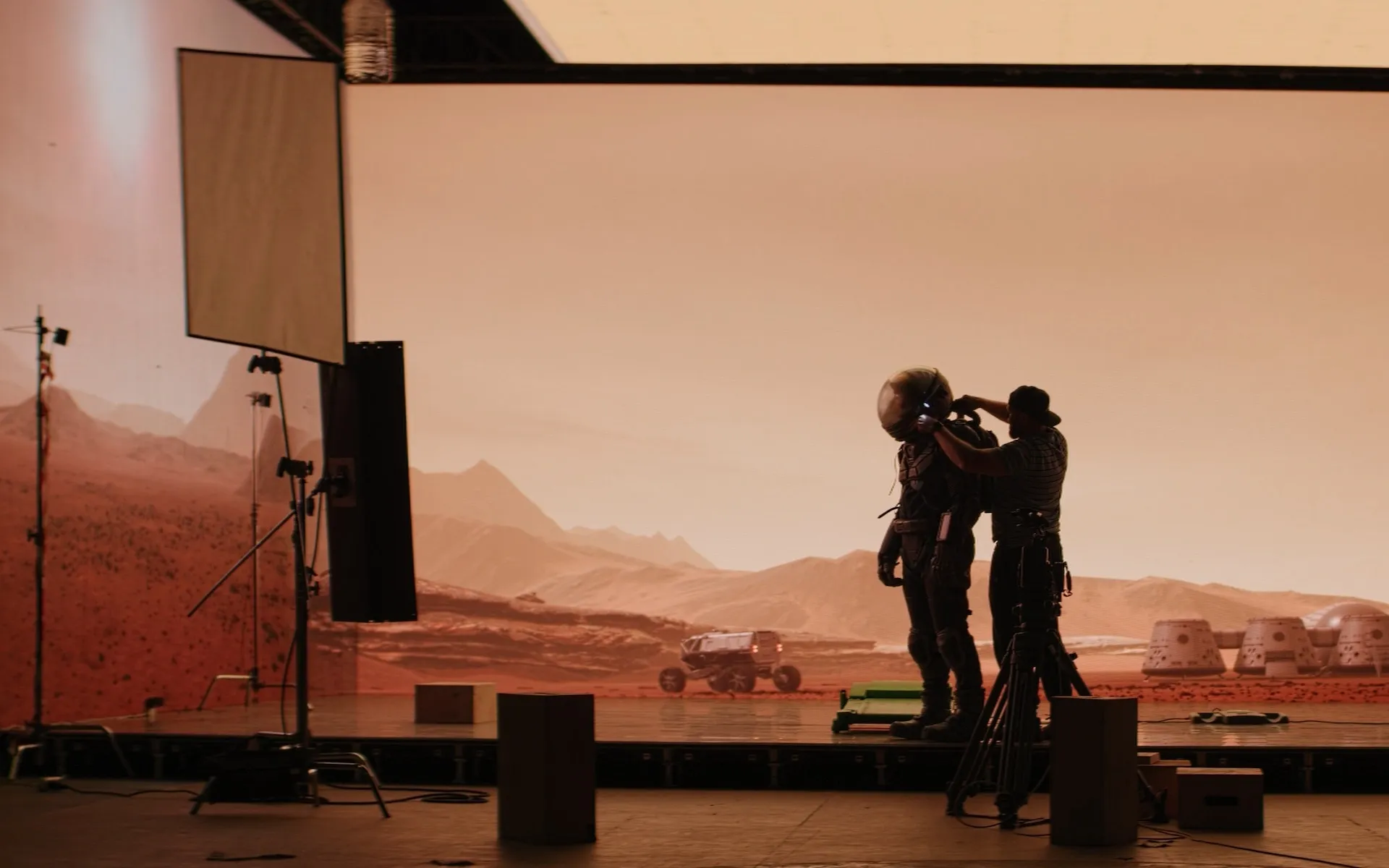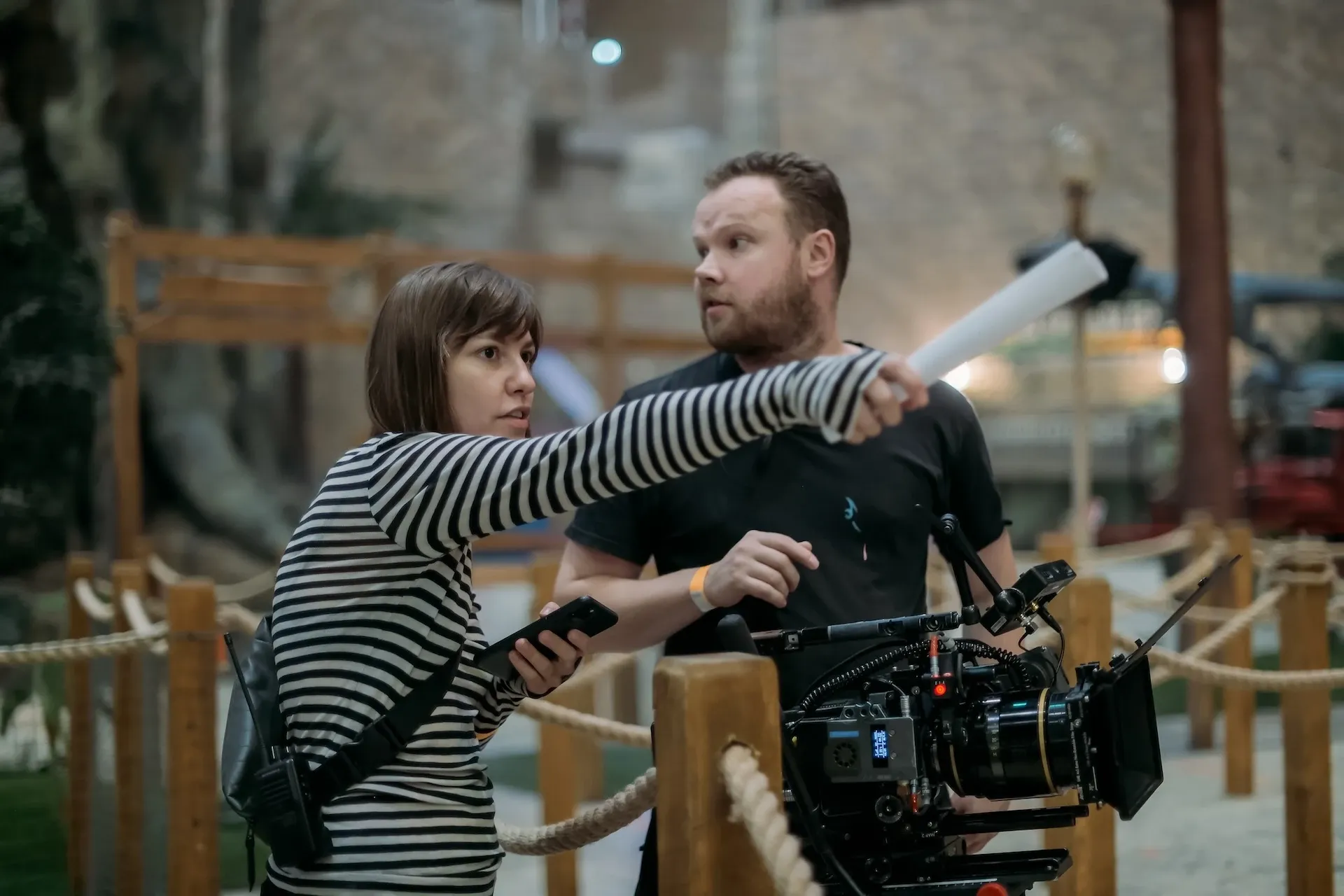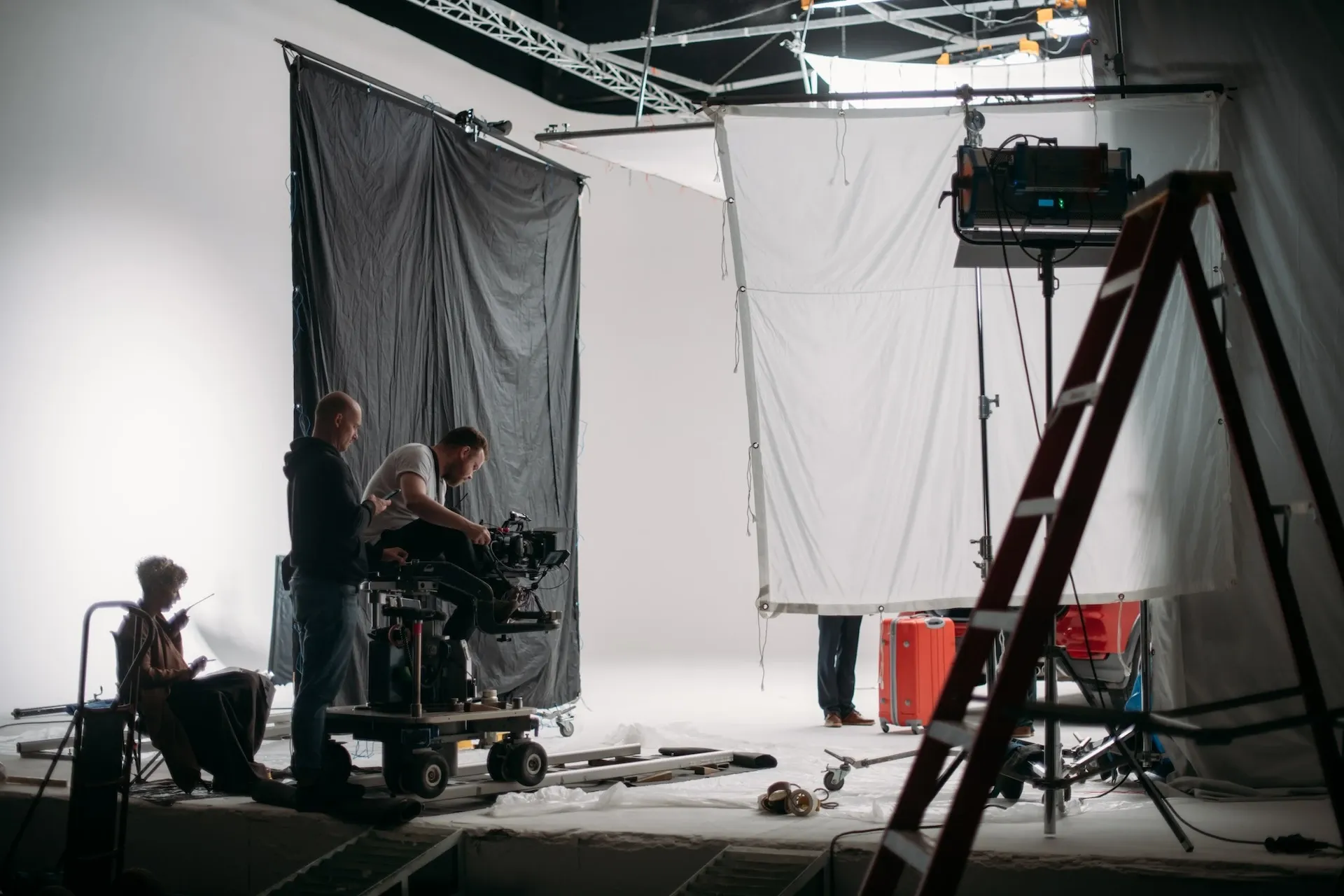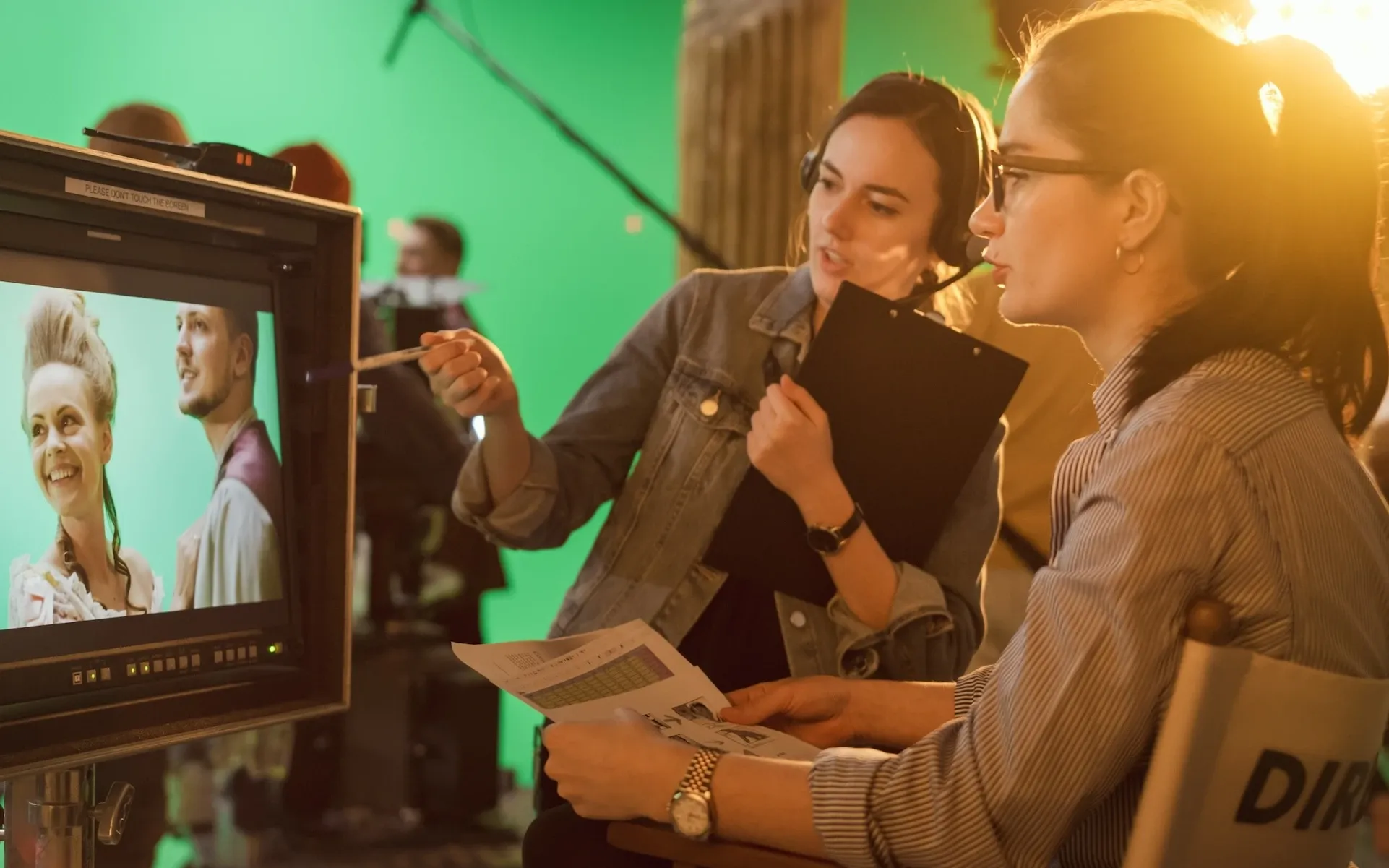What is a dolly shot and what are the best examples?
The dolly camera movement is one of the most famous in cinema. Discover what a dolly shot is, how they’re composed, and the best examples.

Dolly shots inject life into your work and tell stories through movement. But what exactly are they, what equipment do you need, and which are the best examples? We’ll run through all of that and more today.
We’ll cover:
- What is a dolly shot?
- What is a dolly shot used for?
- Who invented the dolly shot?
- What equipment do you need to capture dolly shots?
- What else can you use to capture dolly shots?
- What’s the difference between a dolly shot and a zoom shot?
- What’s the difference between a dolly shot and a tracking shot?
- What are the best dolly shot examples?
What is a dolly shot?
A dolly shot is captured by a camera mounted on a wheeled cart, which is known professionally as a dolly. The dolly usually runs on a set of tracks — pretty much like a train — and brings the camera forward, backward, and to the side, following your subject. A dolly shot can also perform a dynamic zoom or pan.
Because the camera is mounted on the dolly, any movement is extremely clean, more like a glide than a shaky shift to the left or right. This makes dolly shots super-smooth, similar to how you might shoot footage with a gimbal or larger rig.
Directors and DPs will usually compose the dolly shot, which is then executed by the camera operator, camera assistant, focus puller, and dolly grip. Who does what depends on the production’s budget and size of the crew.

What is a dolly shot used for?
Filmmakers use dolly shots to add contrast, tension, verve — they squeeze out a level of control and drama you can’t get otherwise. Let’s look at the main uses for dolly shots:
- Dramatic zooms: Pushing in with a dolly moves the entire camera toward the subject, creating an intense drama you might not achieve with regular zoom. This is a ‘dolly-in’ shot — the opposite is a ‘dolly-out,’ during which the rig backs away from a close-up shot and into a wide shot. Zooming while performing a dolly-in or dolly-out results in a dolly zoom, which changes the size of the background while the subject remains the same.
- Tracking shots: Because dolly shots are secured by a rail and move on wheels, they allow for slick, consistent tracking shots.
- 360 shots: If you’d like to circle a subject, you can build the dolly track in a circle to perform a full 360-degree shot. This is often seen in music videos, but can also be used in traditional narrative footage.
- Double dolly: Placing a subject on the dolly track allows the camera to follow the subject, as it will move at the same pace as the dolly cart. This creates an uncanny, dreamlike vibe.
- Depth: Dolly shots are your eyes on the ground — using them creates depth and helps a viewer parse through the information, as if they were in the scene themselves.
- Establishing shots: Dolly shots can make for great establishing shots, especially if you’re revealing a grand location or somewhere with multiple points of interest. The constant, stable dolly movement allows the viewer to absorb the information at a manageable pace, rather than jumping all over the place with multiple cuts.
Who invented the dolly shot?
The dolly itself was invented by Spanish filmmaker Segundo de Chomón, way back in 1907. Alongside filmmakers like Georges Méliès, he was an instrumental part of cinema’s early growth — Chomón’s dolly was used in Giovanni Pastrone’s 1914 film Cabiria, capturing the first ‘real’ dolly shots in popular media.
What equipment do you need to capture dolly shots?
Dolly shots are an industry-standard technique. As such, they require more equipment and set-up than ‘regular’ shots. Let’s look at the core equipment you can use to build and nail a dolly camera movement:
- Cinema platform dolly: These are the top-range dollies you’ve seen on film sets, boasting a comfy seat, adjustable settings, and more. They don’t come cheap, so may be out of budget for small-to-mid-sized productions.
- Doorway dolly: These are the basic dollies that look a little like warehouse equipment. They don’t offer the ergonomic cool or customizable elements of a cinema platform dolly, but will likely be more budget-friendly.
- Table dolly: This is a smaller, tabletop dolly that rolls around at a fraction of the budget. Table dollies are great for shorter, tighter dolly shots.
- Dolly tracks: Without tracks, you may struggle to shoot the smooth-as-butter, stabilized footage associated with dollies.

What else can you use to capture dolly shots?
On a tight budget? No worries. You can use different equipment to replicate the dolly camera movement style. Here are just a few options:
- Tripod dolly: This is a set of wheels ready to attach to your camera tripod, essentially turning it into a dolly. However, they don’t work on dolly tracks — they’re designed for a smooth, even studio floor.
- Steadicam or gimbal: Camera stabilization equipment can help you set up dolly-style tracking shots. In particular, gimbals are great for cutting costs without slashing the quality in half.
- Makeshift dollies: Some filmmakers create their own versions of dollies, out of necessity or for stylistic reasons. Filming from a skateboard, wheelchair, or even the back of a moving vehicle can bottle the magic usually reserved for expensive dolly equipment.

What’s the difference between a dolly shot and a zoom shot?
Dolly and zoom shots are often spoken about interchangeably, but is there a difference? Yep. Zoom shots adjust the camera lens’ focal length to achieve the close-up, whereas a dolly shot literally moves the camera. The latter makes for a more kinetic, physical viewing experience.
What’s the difference between a dolly shot and a tracking shot?
Tracking shots move alongside the subject, ‘tracking’ it from point A to point B. While some dolly shots can be classed as tracking shots, not all are — a dolly zoom isn’t a tracking shot, for example.
Need some music to complement your dolly shots? We’ve got your back. Check out more than 50,000 cream-of-the-crop tracks below.

What are the best dolly shot examples?
Now that we’ve covered what dolly shots are, how they’re used, and what equipment you need to get started, let’s wrap up with three world-class dolly shots.
Vertigo (1958)
Alfred Hitchcock’s work often pops up in our GOATed lists, purely because he established many of modern filmmaking’s tropes and standards. While he wasn’t the first director to use a dolly zoom, he worked with cameraman Irmin Roberts to create the most famous — Vertigo’s dolly shot is so well-known, other filmmakers call it ‘the Vertigo shot’ when using it in their own movies.
The Vertigo shot is a classic dolly zoom, magnifying a staircase from high up. The shot is used at a crucial moment in the film, amplifying the protagonist’s fear of heights.
Rocky II (1979)
The Rocky movies rival Baywatch for the sheer amount of montages, but Rocky II’s training footage is something special. It shows Rocky in a much different place to the first film, with the public behind him, ready to finally beat Apollo Creed in the ring.
The tracking dolly shots here are stunning, which makes sense — the movie’s cinematographer was Bill Butler, who’d already worked on Jaws, Grease, and One Flew Over the Cuckoo’s Nest. The shots in question emphasize the scale of support behind Rocky, and also demonstrate just how in-shape he is, sprinting in front of everyone else. We’re getting sweaty just watching it.
La La Land (2016)
This last example isn’t as dramatic as the previous two, but it’s great all the same. Damien Chazelle’s mega-hit La La Land was a throwback to old-school Hollywood — together with cinematographer Linus Sandgren and the rest of the crew, he created a twinkling, nostalgic love letter to cinema.
La La Land’s packed with long takes and tracking shots — this slow dolly-in is another example of the drawn-out, vintage style they were going for. It’s not a dynamic shot by any means, but it hooks the viewer’s eye to the story’s emotional core: the two main characters, Seb and Mia.
Paired with the right gear, crew, and on-screen action, dolly camera movements can spice up your content and take it to the next level. But it can’t do that alone — it’s just one of many elements, one of which is music.
The soundtrack can make or break your content — an ill-placed song can scupper the mood, pull the viewer out of the zone. It’s tough to get right, so let us take care of it.
Our catalog is high-quality, affordable, and safe. An Epidemic Sound subscription goes beyond royalty-free music, removing the headache of licensing and freeing you up to do what you do best. You can enjoy the safety of our license hand-in-hand with our massive catalog of 50,000 tracks, covering just about every genre you can think of. You’ll also gain unlimited access to our advanced search functions — finding the right sound’s never been easier.
It’s better than royalty-free. It’s worry-free. Get started with Epidemic Sound below.

Are you a filmmaker? We've got you covered with background music for videos, including:
Take your video editing to the next level with our massive catalog of music for filmmakers.
